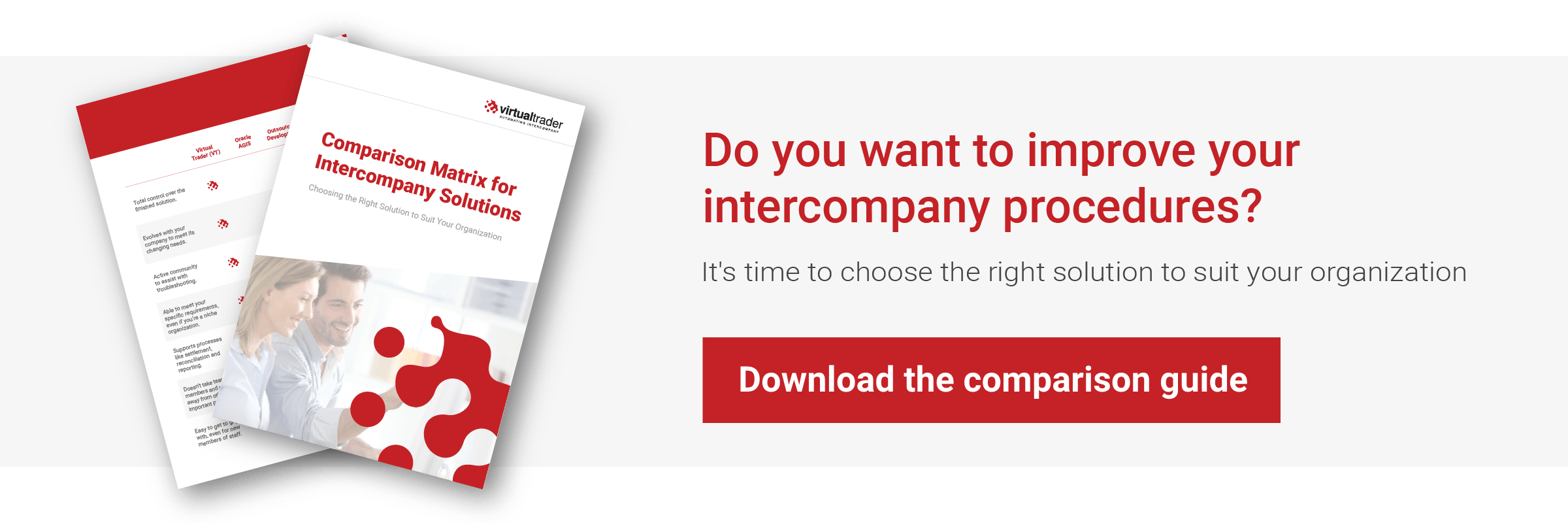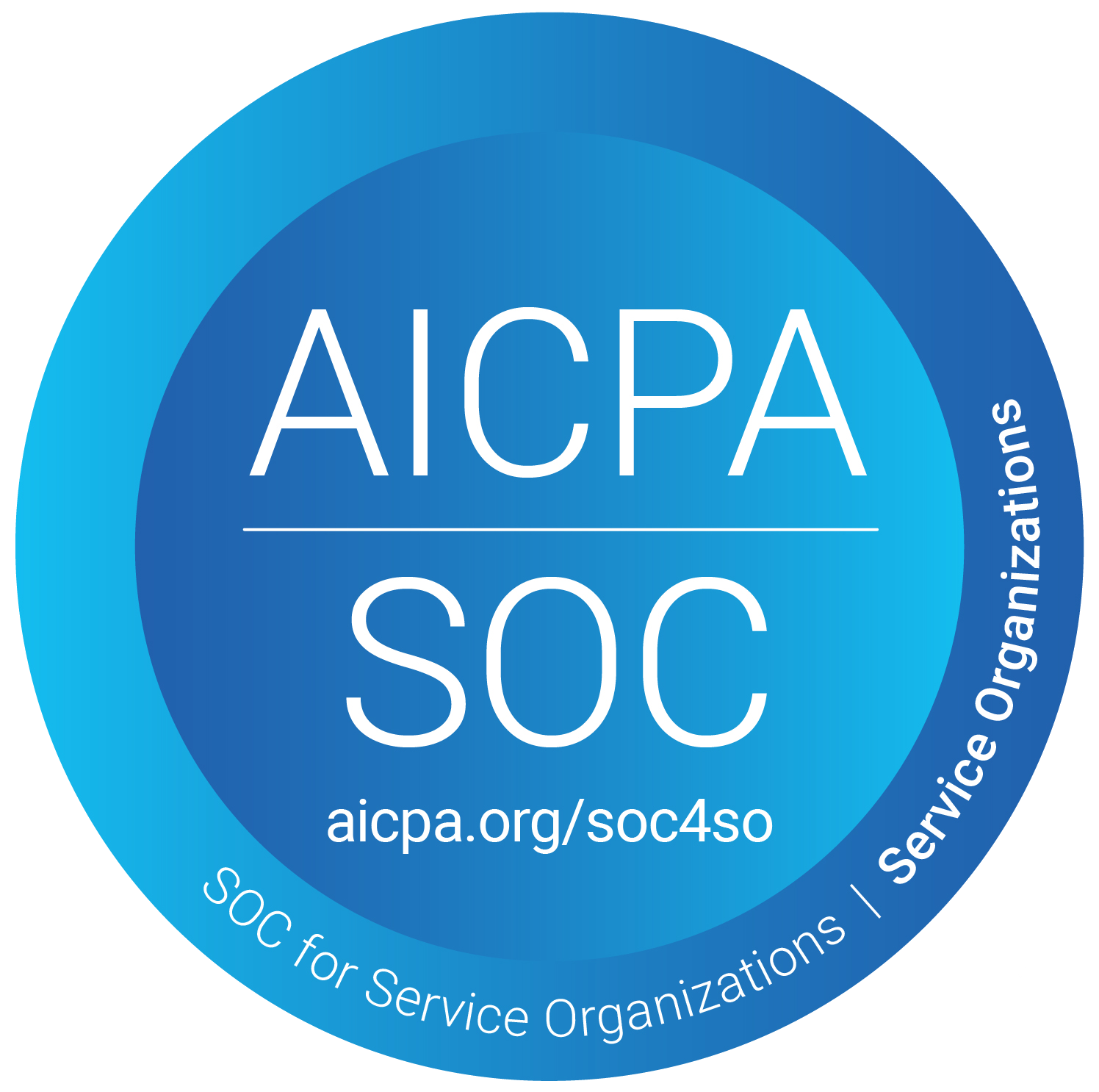Ensuring a quick and smooth intercompany reconciliation process is often a challenge for most companies. Globalization and new regulations have made intercompany accounting and the subsequent reconciliation of balances even more difficult, but it's not a task that can be ignored as it can increase corporate risk, as emphasized by Deloitte.
Oracle AGIS is a centralized intercompany accounting system that can streamline the reconciliation process. This ultimately means companies spend less time ensuring intercompany balance so they’re ready for period close. AGIS adds the following features for Oracle users:
-
Ensures Intercompany Balance
-
Provides a Flexible Workflow Approval Process
-
Integrates with Oracle EBS and General Ledger
-
Allows Senders and Receivers to Update Their Own Accounting Details
Ensures Intercompany Balance
A common reason for intercompany accounts not to balance at period close is caused by the payable and receivable transactions being entered into each company’s financial systems independently. The payable and receivable will each be valid in their own ledger, but there is the opportunity for them not being matched with each other across ledgers. This causes an intercompany imbalance that has to be found and reconciled at period close.
AGIS avoids this problem by controlling both sides of the intercompany transaction together. Only when both sides of the intercompany transaction have been completed and approved, are they both sent to their respective ledgers simultaneously.
Provides a Flexible Workflow Approval Process
AGIS sends automatic approvals to all payment recipients. This ensures a seamless, efficient process because both sender and receiver is kept in the loop. It’s a systematic way to allow all parties to be aware of what’s happening and what’s going to happen.
Sending automatic approvals also means all parties can take action whenever they want to. There’s no need to arrange meetings or communicate via dozens of back-and-forth emails. This is particularly useful for companies who have subsidiaries in different countries as automatic approvals mean time zones are less likely to interfere with productivity.
Integrates with Oracle EBS and General Ledger
Oracle AGIS is integrated with Oracle eBusiness Suite (EBS). This means it looks exactly the same as the EBS system, and there’s no new technology for your IT team to learn. The interface looks the same. You even use the same login details to access this functionality.
As AGIS is hosted within EBS, it is fully integrated with Oracle General Ledger. So AGIS validates company details and ledgers, chart of accounts details and accounting calendars. This ensures that all entries are correct and balanced before being posted to the ledgers, and ultimately saves time when reconciling and closing the period.
Allows Senders and Receivers to Update Their Own Accounting Details
The accounting process for cross charges is generally to relieve an expense on one company, and transfer that cost through the intercompany accounts to an expense in the other company. The intercompany accounts are usually a given. However the expense or offsetting accounts in the sending and receiving companies often require localized knowledge of the company or business concerned, and cannot all be entered by any one party alone.
AGIS gets around this problem by allowing each company in the transactions to maintain the accounting details for the journal lines relating to their own company.
This ensures that the value of any crossed charges are recorded in the correct place in the ledger, and that any statutory reporting will be accurate and compliant.
But There Are Some Functionalities That AGIS Lacks...
AGIS is a system that keeps intercompany accounting and transactional data in one centralized location. This makes it extremely useful when it comes to maintaining intercompany balance as it can significantly reduce the time companies spend on the reconciliation process.
AGIS is a system that keeps intercompany cross charges in one centralized location, and along with its other advantages can significantly reduce the time companies spend on the reconciliation process.
Despite this, there are still some functionalities that AGIS lacks, including:
-
There’s no functionality for aging analysis. AGIS is not a sub-ledger, and does not provide any functionality to settle items raised through it. Settlement is usually done by posting a journal to reduce the intercompany balances. However as this is not allocated to close settled items, there is no way of identifying items still open, or how old they are. Reconciling open balances becomes extremely difficult, and opens the organization open to tax penalties.
-
There’s no intercompany invoice print. AGIS doesn’t produce an intercompany invoice print, and there are no links to any tax engine. Tax has to be entered manually, and if a tax engine is being used to make statutory returns to the authorities, these transactions will not be included.
-
There’s no automation for handling trade through intermediary companies. Most businesses have trade through intermediary companies but AGIS doesn’t automate this process. Instead, you have to create another separate intercompany journal for each intermediary which is a tedious job and time consuming activity, and can introduce serious errors into the final accounting.
-
There is setup to be done for each relationship. AGIS requires setup for every combination of sender and receiver company, which becomes particularly cumbersome when you’re dealing with a large number of companies.
However, Virtual Trader (VT) can help. Designed especially for supporting the full intercompany lifecycle, VT can automate the entire process.
VT provides a unified approach to handling intercompany transactions. The sub-ledger provides a global intercompany reconciliation for the entire organization, and aging analysis, allows treasury to keep on top of both settlement and funding where necessary, and manage pooled cash assets efficiently.
VT can automate the creation of all the necessary accounting involving multiple intermediaries, from a transaction recorded as a simple sender/receiver transactions.
VT can link to tax engines and produce compliant intercompany invoice statements, for both simple intercompany activity, or more complex scenarios involving trade through intermediaries.
There are many other remarkable functionalities that can help streamline your intercompany reconciliation process. Download our eBook to read more on how this intuitive software works and how it stands up in comparison to other popular intercompany solutions below.




 US
+1 800 961 9640
US
+1 800 961 9640

